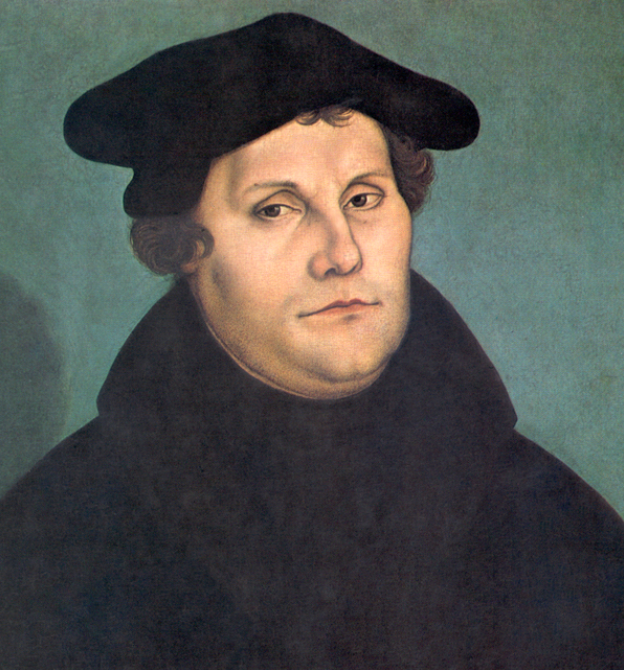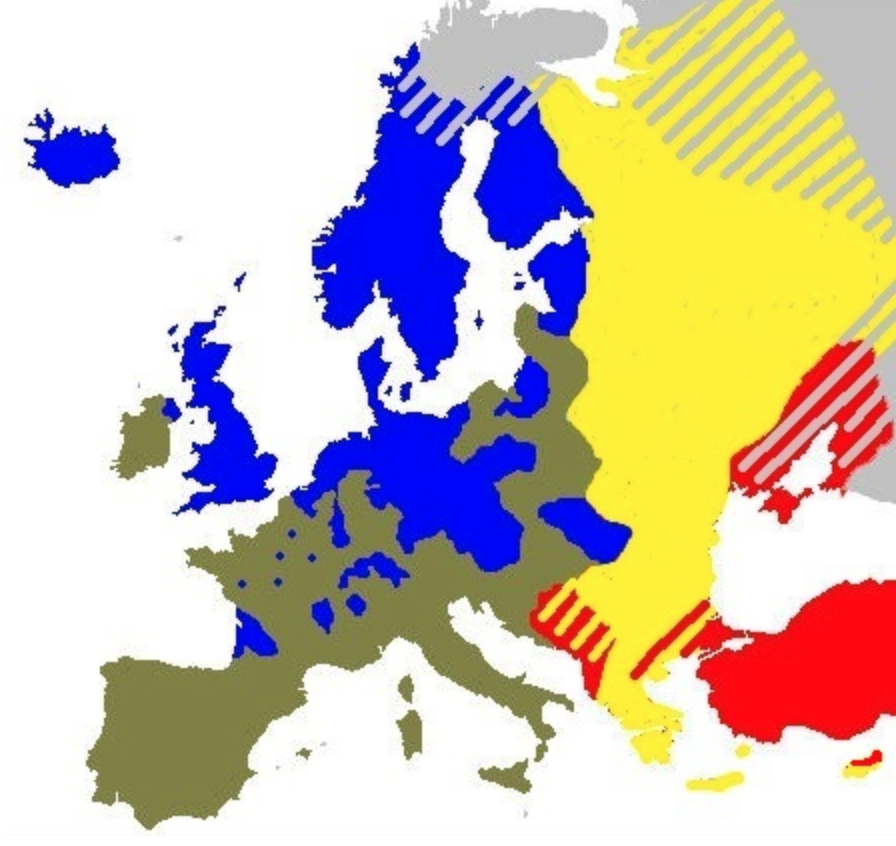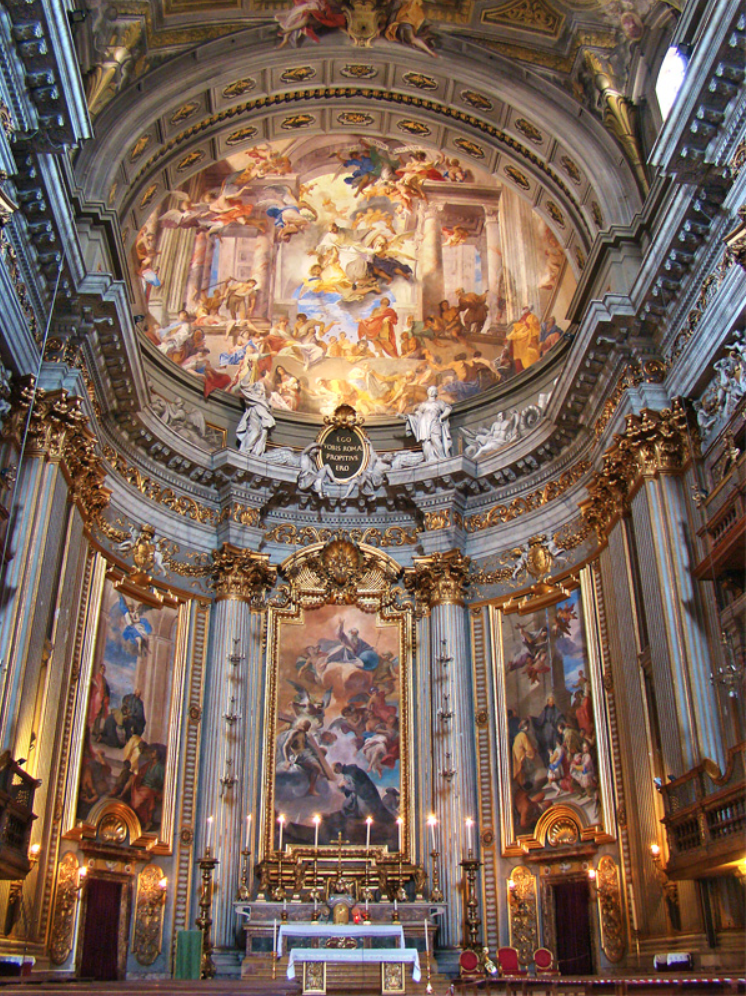Minna Chow
Eric Beckman
AP European History 🇪🇺
335 resourcesSee Units
The key concepts of Unit 2 revolve around religious pluralism or multiple religions. The Protestant and Catholic Reformations made Europe more religiously diverse. Europe was already somewhat diverse with dominant Roman Catholics (Central and Western Europe), Orthodox Christians (Eastern Europe), and Jewish and Muslim communities. With the significant exception of the Muslim Ottoman Empire 🕌, Christian rulers dominated the political sphere—the Protestant Reformation was so important because it challenged this.
In this unit, we’ll see how Western Christianity fractured into multiple competing Christian sects, weakening the power of the Church ⛪️.
Time Period Covered: c. 1450 to c. 1648
Protestant Reformation
Learning Objective: Explain the context in which the religious, political, and cultural developments of the 16th and 17th centuries took place.
Learning Objective: Explain how and why religious belief and practices changed from 1450 to 1648.
The central event this unit focuses on is the Protestant Reformation. All the other events discussed in this unit are in some ways reactions to it. To understand this unit, we first need to understand: what was the Protestant Reformation?
Protestants were people who protested (get it? 🤓) against the Roman Catholic Church that strongly influenced Western and Central Europe. More than a religious organization, the Catholic Church owned land (a lot!), played a significant role in politics and daily life, and enforced morality. It was a big deal. Protestants wanted to reform this organization, hence “Reformation.” The Protestant Reformation created new Christian denominations, such as Lutheranism and Calvinism.

Portrait of Martin Luther, 1529, painted by Lucas Cranach the Elder
Protestants criticized the church in two main ways: corruption and theology, the study of the nature of God and religion. Some Church leaders corruptly gained and profited from high positions through bribes or family connections. Protestant reformers, such as Martin Luther and Jean (aka John) Calvin, also stressed theological differences with the Catholic Church. Although previous people had proposed reforms, the German monk and theology professor Luther began the Reformation in 1517 by writing 95 Theses 📜 opposing the Church’s authority and the Pope. Later, Calvin organized Protestant ideas into a Reformed tradition that stressed proper behavior and believed that some people were predestined for salvation (going to heaven instead of hell after death).
The core difference between Catholic and Protestant theology was the Church’s role in salvation: Catholics maintained that ordained clergy (Church officials from Priest to the Pope) provided salvation through seven Christian sacraments or religious ceremonies. Protestants only supported two of these sacraments (communion and baptism) and argued that scripture (religious writings, such as the Christian Bible) was the source of religious authority. The development of printing presses during the 15th Century spread Protestant ideas and Catholic responses; since Protestant theology emphasized that individual Christians should read the Bible, Protestantism encouraged literacy 📖.

Image from Wikipedia
Map showing Protestant territories at their peak in blue, c. 1600.
Catholic Reformation
Learning Objective: Explain the continuities and changes in the role of the Catholic Church from 1450 to 1648.
The Catholic Reformation, commonly called the Catholic Counter-Reformation, refers to actions taken to address corruption while reaffirming Catholic theology, most significantly at the Council of Trent, 1545 - 1563. The Catholic Church also created new religious orders (organized groups of ordained clergy) that worked toward both of these goals, such as the Society of Jesus, aka the Jesuits. As a result of these efforts, a Counter-Reformation won back some territory for the Catholic Church in central Europe. The Jesuits and others also spread Catholicism in the Americas, Africa, and Asia.
The Reformation and Politics
Learning Objective: Explain how matters of religion influenced and were influenced by political factors from 1450 to 1648.
Some European elites used Protestantism politically as a way to gain independence from higher authorities. In the decentralized Holy Roman Empire, many Princes embraced Lutheran teachings to increase their independence and seize church lands. In England, Henry VIII’s desire for more power led to creating a new Protestant denomination, the Church of England, that was closer to Catholic theology than other Protestants. This, in turn, left space for Protestants more committed to reforming or purifying the church (i.e. “Puritans,” get it? 😇) to continue to dissent.
The combination of politics and religion meant that the Reformation contributed to wars of religion. All of these conflicts involved political, economic, and religious dimensions. Often other countries were affected, too. The agreements ending these wars were very significant, so make sure you know each treaty!
Major Religious Conflicts, 1450 to 1648
| Name | Location | Conflict | End |
| Schmalkaldic Wars, 1532-1555 | Holy Roman Empire | Protestant Princes vs. Holy Roman Emperor and Catholic Princes | Peace of Augsburg: Princes could choose Lutheranism or Catholicism |
| French Wars of Religion, 1663 - 1698 | Holy Roman Empire | Protestant nobles vs. Catholic nobles vs. King (Catholic) | Edict of Nantes Formerly Protestant Henry IV (Bourbon) became King |
| Dutch Revolt, aka Eighty Years war, 1568 - 1648 | The Low Countries | Calvinists vs. Spain | Split: Independent Protestant Netherlands; Spanish control of the remainder |
| Thirty Years War, 1618 - 1648 | Holy Roman Empire, Austrian Habsburg lands | Holy Roman Emperor vs. Protestant Princes | Habsburg lands more Catholic. Peace of Westphalia: HRE remained divided; Princes could choose Catholicism, Lutheranism, or Calvinism |
European Society, c. 1450 to c. 1648
Learning Objective: Explain how the religious, political, and cultural developments of the 16th and 17th centuries affected European society from 1450 to 1648.
Learning Objective: Explain how economic and intellectual developments from 1450 to 1648 affected social norms and hierarchies.
Religion, family, and the agricultural calendar continued to dominate European life. The Renaissance and the Reformation both involved debates about gender roles, but patriarchal social structures continued as Protestant and Catholic teachings stressed domestic roles for women. Some women preached in more radical Protestant communities, but men dominated Protestant denominations. Protestants also closed female abbeys (along with male monasteries), eliminating independent female communities.
The 1500s were also a time of growing fear and persecution of witchcraft across central and western Europe. Women were much more likely than men to be accused of and punished for witchcraft. The religious upheaval was one factor in this persecution because raised concerns about social change lead to public pressure to confront witchcraft.
European Art, c. 1450 to c. 1648
Learning Objective: Explain how and why artistic expression changed from 1450 to 1648.
The political and religious changes of this time also influenced art. Protestant-influenced art was more subdued, while more flamboyant styles like Mannerism and Baroque flourished in Catholic areas. Powerful monarchs and the Catholic Church sponsored dramatic Baroque art to impress their people.
🎥 Watch: AP European History - Reformation

Image from Wikipedia
St. Ignacius Church, Rome, 1626 - 1650
Browse Study Guides By Unit
🎨Unit 1 – Renaissance & Exploration
⛪️Unit 2 – Reformation
👑Unit 3 – Absolutism & Constitutionalism
🤔Unit 4 – Scientific, Philosophical, & Political Developments
🥖Unit 5 – Conflict, Crisis, & Reaction in the Late 18th Century
🚂Unit 6 – Industrialization & Its Effects
✊Unit 7 – 19th Century Perspectives & Political Developments
💣Unit 8 – 20th Century Global Conflicts
🥶Unit 9 – Cold War & Contemporary Europe
📚Study Tools
🤔Exam Skills
👉Subject Guides

Fiveable
Resources
© 2025 Fiveable Inc. All rights reserved.